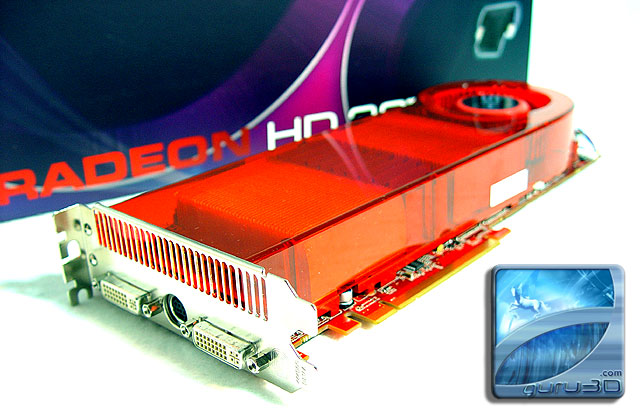Page 2 - RV670 vs R680
The new Radeon naming schema
Alright, before we dive into the actual technology I wanted to discuss what you probably already have noticed on the first page. There are no more Pro, XT, XTX, GT extensions in the product names, are there? Ah yes my friend... and thank you AMD. Finally naming the way it's meant to be understood, this one makes sense if you think about it for a second. So let me explain first how you need to look at the new naming schema:
Let's take the ATI Radeon HD 3870 as an example.
- The first number, 3, denotes the Generation.
- The second number, in this case x8xx, is Family
- The last two digits, xx70 is the Variant. 70 is equivalent to XT, 50 is the new name for Pro

Simple and easy, the higher the number the faster and newer the product shall be. Inevitably with the next generation variants of the 2400 and 2600 released, expect to see a 3x50 and 3x70, and likely with a few other variants as well.
Here's where we land at RV670
RV670 is the codename for the chip under the hood of the Radeon HD 3850 & 3870 graphics cards. Since the 3870 X2 utilizes two of these chips we need to explain the architecture a little.
Back to the dirty tech talk though; the RV670 graphics core by all means is not just a die-shrink of R600 (Radeon 2900 XT). It does fix a lot of inefficiency issues that ATI faced with R600 (Radeon HD 2900 Xt). The processor is now manufactured at a much smaller 55nm process and entails a significant number of improvements. Let's walk through the more important ones.

For me personally, there are two very big improvements on the 38xx series of GPU. You'll get near same performance as a HD 2900 HD at half the price and secondly, half the power consumption (thus lower wattage). Do you guys remember that the 2900 cards had two power connectors (one 75W 6-pin & one 150W 8-pin) ? That's completely obsolete. Just a 6-pin connector will be sufficient as the fastest model announced today (HD 3870) uses merely half the Wattage of that 2900 XT at roughly 105 Watt (peak).
There are a number of reasons for the decrease in power consumption. Obviously the 55nm fabrication process is showing it's advantages there as the smaller a die size is the less voltage it requires.
Let me try to explain in a very laymen explanation:
Think of soccer/football. Flood a football field with water. And instead of kicking the ball we use the water flow to get the ball from point A to B. Now we cut that football field in half yet have the same amount of players playing soccer, this would mean we'd use less water. And the soccer players would get their football quicker from point A to B as the distance is shorter. In the case of this silicon, the soccerfield is the RV670, water would be the current flowing through the silicon. The soccer players the transistors and the football the data transmitted.
Next to that smaller die-size AMD also incorporated ATI Powerplay (known from their mobile products) into the GPU which seems to do wonders in power consumption as it can regulate voltage levels and clock speeds on the fly. Pretty brilliant, we'll show you some results later on.
HIS Technology Radeon HD 3870 X2
The product as tested today comes from our good partners at HIS Technology, the product itself is furthermore 100% reference. Yet obviously we'll look into the logistics in terms of the bundled items.
Ehm, I hear you ask "Hilbert, you persistently say RV670 but I heard this cards is manufactured under codename R680 ??". Yes, see if you take two RV670 graphics processor units, stick them on the same PCB and bridge them .. then you have a product under codename R680. R680 is simply a codename that ATI used to develop this multi-core based graphics card. So if you'd take two 512 MB HD 3870 cards and run them in Crossfire ... you'd have nearly identical performance.
"What's Crossfire ?" some of you might ask. A valid question as we take verbs like Crossfire & SLI for granted these days.
Well, just like NVIDIA's SLI, Crossfire is a situation where you add a second similar generation graphics card (or in today's case GPU) to the one you already have in your PC and effectively try to double your raw rendering / gaming performance.
The idea is not new at all though .. if you are familiar with the hardware developments over the past couple of years you'll remember that 3dfx had a very familiar concept with the Voodoo 2 graphics cards series. There are multiple ways to manage two cards rendering one frame, think of Supertiling, it's a popular form of rendering. Alternate frame Rendering, each card will render a frame (even/uneven) or Split Frame rendering, simply one GPU renders the upper or the lower part of the frame. So you see there are many methods where two or more GPUs can be utilized to bring you a gain in performance.

